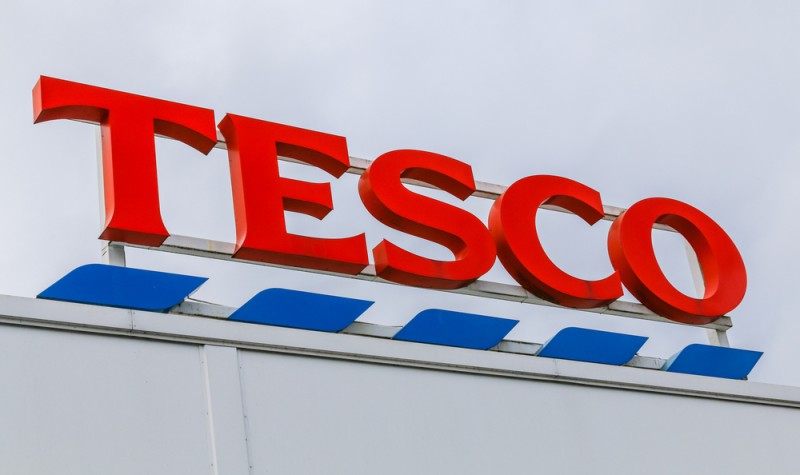Is It Time to Add Tesco to Your Shopping Basket?

Staring hard at the Tesco share price charts does not make the equity look any more attractive in terms of absolute and relative share price momentum. Over the last year, Tesco shares have dropped 30 per cent whereas the FTSE100 Index has fallen by only 10 per cent.
Over a six month perspective, Tesco shares did better than the FTSE 100 (up 4.8 per cent in contrast to the FTSE 100’s rise of only 2.4 per cent) but in recent months the weakness of performance has chipped in again with dear old Tesco, underperforming the market – as measured by the FTSE 100 index – by over 7 per cent.
Tesco was in decline for most of last year and it looked as though it had broken out of that downtrend early this year. Sadly, that breakout was as short lived as a dragonfly! The share price is now heading down again. There seems no obvious support in sight; particularly following the company’s last announcement.
The only useful observation, in relation to a year’s chart, is that it was profitable, from a trading point of view, to pick up the shares after they had underperformed the market by 30 per cent or more and to sell them again after periods when the shares are shown to have performed in line with the index.
Such a chart ‘buy’ signal flashed last October, so could it possibly be true now given that the shares have once again underperformed the FTSE 100 by 30 per cent again? However, that has happened only once and there is no great supporting evidence yet of it wishing to do so again, just at the moment. The main observed thrust of the share price’s momentum, still appears to be southerly in direction. Something for watching, I think!
Meanwhile, a look at the fundamentals…
If there is little joy to be found in simple chart gazing, is there any glimmer of hopefulness to be found in the accounts? Anything which might afford palpable support to the observation that the shares might be good value, having underperformed the market by 30 per cent over the last year?
The first item on the tour of financial inspection of the annual report and accounts for last year (the year which ended 27 February 2016) has to be the property account and the net assets. Have the property investments of Tesco stood up well in the cold wind of competition and the effect that it has had on food retail property assets?
Although the balance sheet shows that property values were down at Tesco, they remain of considerable value and have not fallen as far and as fast as the Tesco share price to which they relate. Last year the value of Tesco’s property portfolio declined by 13.5 per cent from £20.4 billion the year before to £17.9 billion. That contrasts well with the aforementioned 30 per cent drop in the share price. Moreover, some of that drop in value will have been attributable no doubt to asset sales and not exclusively to any fall in the market value of big shop asset values in the property market. That may be regarded as a relief and a better outcome than might possibly have been expected.
Partly in consequence, Tesco’s bottom line net asset value actually perked up last year rather than continuing the massive decline of the year before. In the year to February 2014 Tesco had a balance sheet equity/net asset value of £14 billion. The year before last, to January 2015, that shrunk dramatically by 52 per cent to £7 billion. Last year it recovered, rising a near 22 per cent to a net asset value of £8.6 billion. Once again, that was a bit of a relief and a better result than may have been feared in the fog of competitive trench warfare.
Next, I note a profound improvement in the company’s cash flow and cash position. Operating cash last year almost disappeared when it fell from £2.88 billion the year before to a mere £475 million. This time it jumped some 347 per cent to £2.1 billion. Year-end cash also improved dramatically, rising 42 per cent to just above £3.1 billion.
This translates into equity/net assets worth an estimated 104p a share, year-end cash valued at an estimated 37p a share, a total asset enterprise value of around 513p a share, and a sales revenue value with an estimated value of some 658p a share. To put that another way, the current share price is not only backed by balance sheet assets attributable to ordinary shares of an estimated 104p (that represents more than two thirds of the current share price): equity itself commands a lot of total assets and sales revenue. That would seem to make the shares look good value on both counts.
What the market expects in terms of earnings and dividends…
The consensus view of the market is basically that last year’s huge plunge in profits was the nadir year, to be followed by rising profits this year and next. The latest consensus forecasts are for a 141 per cent rise in earnings this year to an estimated 6.6p and a 38 per cent next year to 9.3p. Since much of this springs from concentrating on the essential UK business, yesterday’s announcement of the disposal of the Kipa and Giraffe business looks on target. The shares are a buy, but not for the dividend.
Comments (0)